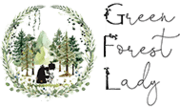I LOVE breastfeeding.
So much so, that I have been nursing for 7.5 years straight. Non-stop through 2 pregnancies, and tandem nursed for a period after each second and third child was born. Nursing is an incredible bonding experience and I have been very blessed to have had an easy nursing journey. I also had an abundance of support from the very beginning - something I consider invaluable and feel that every new mom should have access to. I home birthed all 3 children with a midwife and, in every way possible, the care and support was top notch.


For some mamas (around 40% according to this paper (1)), nursing can come with challenges. Latch issues, tongue or lip ties in baby, over-producing, under-producing, mastitis or lack of support and education surrounding breastfeeding are a few. Even without any of those concerns, early days of nursing also come with the hurdle of getting your very sensitive nipples adjusted to their new role. This can be a little painful, drying, sometimes causing them to crack or bleed. Every nursing mama knows exactly what I mean when I refer to the wince that comes with the latch during the first week or the yowl when baby’s teeth start to come in. Yikes!

Nursing mamas are not alone in the nipple irritation department though and dry, cracked nipples aren’t exclusive to women. Surprisingly, this is a common problem for both men and women.
Why do dry, cracked nipples occur?
Other than breastfeeding, they are mostly caused by:
- Pregnancy - hormonal changes during pregnancy can cause extra sensitivity
- Chafing during exercise or sports - new moms getting back into a workout routine seem to be especially vulnerable
- Using harsh soaps that deplete the skin’s naturally produced oils and cause dryness. See this post on the importance of clean ingredients in soaps
- Irritation and chafing from synthetic or poor quality fabrics and dyes
- Chlorine from swimming pools - Spraying your body with a homemade vitamin c water can help neutralize the chlorine on your body before you jump in a shower to wash it off
- Bacterial or fungal infections - if nursing, fungal infection can be passed to baby aka thrush
How to Fix the Problem
There are some simple ways to fix most of the above listed causes.
- Warm compresses
- Drink lots of water to keep your skin hydrated
- Wear loose fitting, soft clothes
- Ditch the irritating and/or toxic soaps, perfumes, and fabrics
- Avoid washing nipples directly with soap as it may remove the body's natural lubricants
- Squeeze out and rub in some of the liquid gold breast milk if you are breastfeeding. Your baby won’t mind sharing a little :)
- Use a protective and nourishing Nipple Balm
What Not To-Do to Help Breastfeeding Nipples
There is advice on the internet that recommends artificially toughening nipples either with physical stimuli or chemicals. It has been recommended to toughen up the nipples before breastfeeding by stimulating them by aggressive rubbing, pinching, massaging with a rough washcloth and even using light sandpaper. Ouch! It has also been recommended to use rubbing alcohol, benzoin or similar chemicals on the nipples to toughen the skin to prepare for breastfeeding. Yikes!The need to toughen nipples before nursing is a myth and thankfully, is not recommended by most health professionals any longer. The methods that used to be recommended can lead to dryness, cracking, bleeding and damage to the nipples. Cracking of nipples allows an opening for bacteria, yeast, fungi etc. to enter, which may lead to infections like thrush and mastitis.

Why Balm and Not Cream?
The short answer: Balms are oil and wax based and creams are water and oil. Nipple balms provide a protective layer and last longer than creams.
Creams
I am sure most (or at least some) of you remember the science experiment in elementary school where you add food coloring to a jar of water and a jar of oil, then mix them together only to watch them separate. So, how does this work for cream – or water/oil - based products? An emulsifier is added. An emulsifier is a common ingredient/chemical in cosmetics, but the problem is that they can come with a host of issues. Their toxic properties can vary and cause a range of skin irritations. In addition, they can have a drying effect. Water containing products generally need a heavy preservative also, or it will go south pretty quickly.
Creams also are absorbed much more quickly and have to be reapplied more often which can lead to increased irritation. For some nipples, creams can also dry the nipples out rather than providing consistent moisturizing.
Balms
Balms are quite a bit thicker than creams and usually in semi-solid form but melt beautifully when they come into contact with your skin. The dictionary definition of “balm” is, “a fragrant ointment or preparation used to heal or soothe the skin.” They provide a hydrating, nourishing and protective layer to the skin and help to seal in the moisture and the healing benefits of the herbs that are infused into the oils. A good bit of the time, butters, like shea, cocoa, or mango are also added in to provide extra moisturizing, nourishing, and healing benefits.
Why Green Forest Lady Nipple Balm?
It is soothing, healing, nourishing, clean, made with 100% organic, non-toxic, non-gmo ingredients, and does not need to be wiped or washed off before nursing your baby. It smells of cocoa butter and herbs and will make you smile with relief each time you apply it.
One customer recently sent me a message and said:
“I recommend this Nipple Balm to everyone!! It helped so much when I got thrush on my nipples for a whole month. It helped soothe them enough that I could still feed my baby without being in excruciating pain and I was so happy to find something so natural that I didn’t have to worry about wiping them it off before feeding her! I truly believe it helped my process so much! Love love love!!” - Jayleigh
Another mother reached out to tell me:
"This stuff is a miracle worker. It is probably what helped me survive breastfeeding. After horrible blistering at birth, this helped me heal quickly and get through those first 6 weeks of learning the routine and overcoming all the breastfeeding obstacles that I had." - D. Habash
What is in it that makes it so good?
The ingredients in Nipple Balm, like all our products, are pure and simple. It quietly boasts nature’s healing power and gently nourishes and relieves dry, cracked, painful, red, irritated skin.
Olive Oil - According to this paper by US National Library of Medicine, “Previous studies have shown that olive oil, applied to the skin, has analgesic and anti-inflammatory properties. It is proposed in this study that olive oil may also help prevent cracked nipple and sore nipple in breastfeeding mothers.” (2)
Cocoa Seed Butter - Made up of mostly fatty acids, it helps to form a protective layer on the skin that prevents moisture from escaping which in turn, stops the sensitive nipple skin and area from drying out.
Shea Butter - Helps keep nipples soft and supple while creating a protective barrier. It moisturizes and helps in cell regeneration which is perfect for healing minor cuts and cracks when baby is teething.
Calendula Flowers - Full of antioxidants, which help repair damaged cells, anti-inflammatory properties which helps soothe the irritated, inflamed and painful skin, and also antiseptic properties that help keep the area free from bacterial growth.
Marshmallow Root - Contains a substance called mucilage, that forms a slick, gummy gel that is cooling, soothing to irritations and helps in wound healing. So much more than a yummy, fluffy treat. :)
How to Use Nipple Balm
Nipple Balm can be applied as many times and as often as needed. There is no need to wash it off before nursing, and it can be used for prevention. Are you a mama like me who is constantly breastfeeding on the go? Hikes, grocery shopping, errands all were made easier with a baby carrier and a jar of Nipple Balm in my backpack, diaper bag and purse.
Pregnancy Nipple Cream
Two questions that are continually asked are, should I use a pregnancy nipple cream and is there a difference between a nipple cream for breastfeeding and a pregnancy nipple cream?
Let’s look at the easiest question first. A nipple cream or balm for breastfeeding and a pregnancy nipple cream or balm are the same. The treatment for sore, cracked, bleeding, painful nipples whether it is caused by the hormonal changes and stressors before the birth of your baby, or after, is the same. Luckily, you do not have to find the perfect nipple balm while pregnant and then find a different one post-partum.
Tender, sore breasts and sore, dry nipples are very common during pregnancy. Sore breasts can often occur shortly after conception and can be one of the first signals that a new life is on the way. A nipple balm can help provide relief for the uncomfortable nipple symptoms of pregnancy as well as help keep your nipples in optimal, breastfeeding-ready shape for the bonding nursing journey to come.


